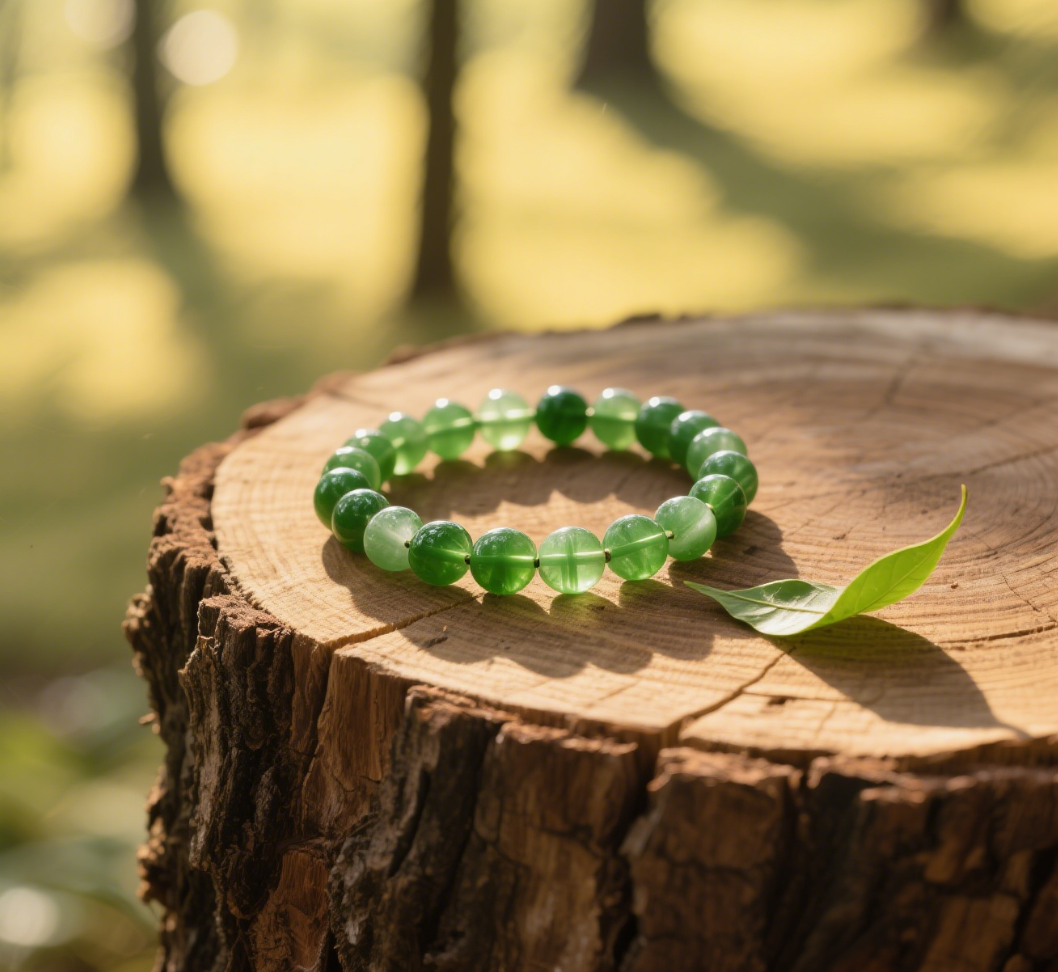
Green Rutilated Quartz: Features, Meaning, and How to Identify It
Share

1. Key Characteristics of Green Rutilated Quartz
Green rutilated quartz is a variety of natural quartz distinguished by fine, hair-like mineral inclusions inside the crystal. These needle-shaped inclusions, which may consist of green tourmaline or actinolite, are arranged in various patterns, creating the illusion of delicate strands suspended within the stone. The visual effect is both intricate and unique, giving green rutilated quartz its signature appeal.
2. Symbolic Meaning and Common Uses
Traditionally, green rutilated quartz has been regarded as one of the stones most closely associated with focus and prosperity. In some cultural practices, placing a green rutilated quartz cluster or crystal sphere in a designated "wealth area" of the home or workspace—such as a desk or business entryway—is thought to support an atmosphere of clarity and productivity.
Professionals who wear green rutilated quartz often describe it as a symbolic companion for work-related growth. Whether you're navigating a new career phase, building a business, or taking on leadership responsibilities, many believe that the stone’s structure can serve as a reminder of grounded ambition and goal-oriented thinking.
3. Main Sources and Origins
The primary sources of high-quality green rutilated quartz include Brazil and Madagascar. Brazilian specimens are especially known for their rich color, clarity, and overall consistency. Madagascar, on the other hand, produces quartz with more distinct variations, which are favored by collectors looking for rare inclusions or unique visual patterns. Both origins offer green rutilated quartz in a variety of forms—raw clusters, polished spheres, and wearable jewelry.
4. How to Identify Genuine Green Rutilated Quartz
For those new to collecting or purchasing this crystal, here are a few widely used methods to distinguish genuine green rutilated quartz from imitations:
Double Refraction Test: Hold a strand of hair behind the crystal. If you observe a doubled image of the hair through the quartz, this may indicate natural quartz, as it typically exhibits a phenomenon known as double refraction.
Temperature Sensitivity: Even on a hot summer day, genuine quartz tends to feel cool to the touch due to its natural thermal conductivity. A plastic or glass imitation, by contrast, often lacks this cooling sensation.
Color and Clarity: Natural green rutilated quartz tends to have varied shades and a more organic color gradient. The internal threads are usually sharp and well-defined. In contrast, imitations may appear overly vibrant, overly uniform in color, or have a cloudy, unnatural transparency with poorly defined internal patterns.
Green rutilated quartz continues to attract attention for both its aesthetic charm and its symbolic associations. Whether used for décor, personal intention-setting, or creative inspiration, it holds a special place among crystal enthusiasts and collectors.
